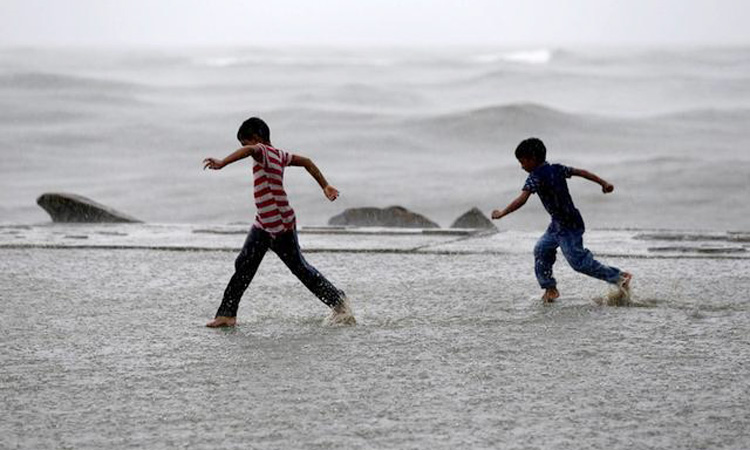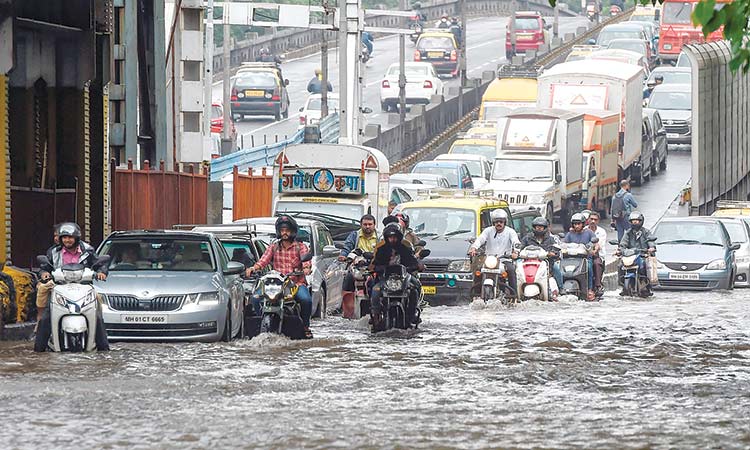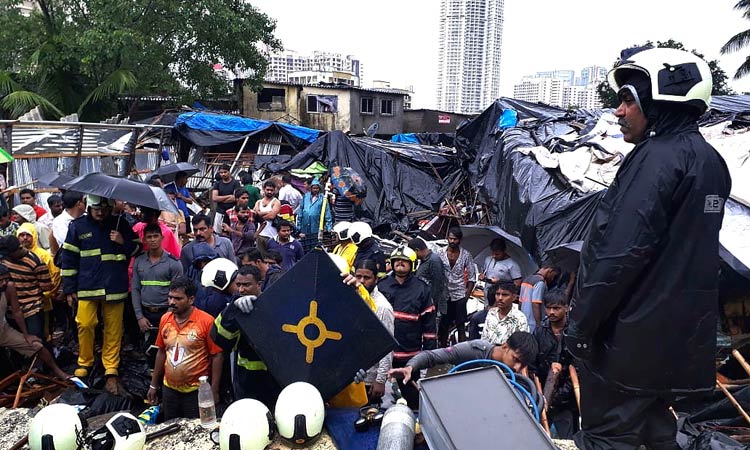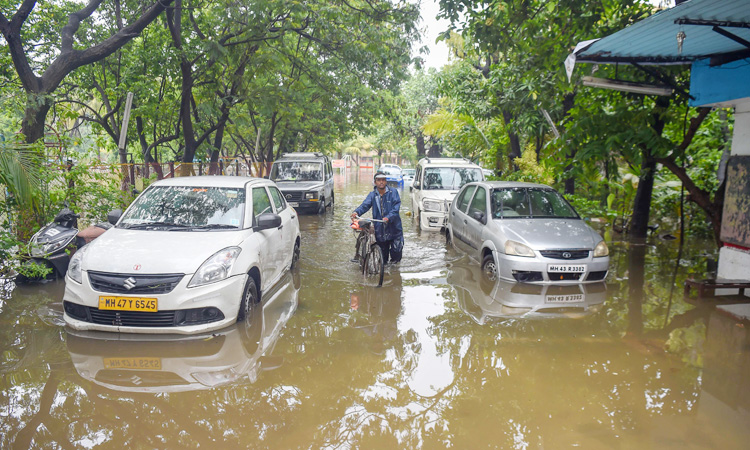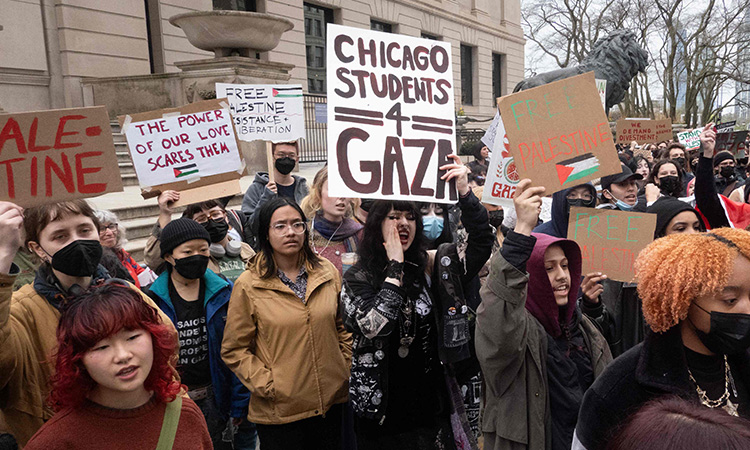Relief to flooded Vadodara, 46% rainfall drenches Gujarat
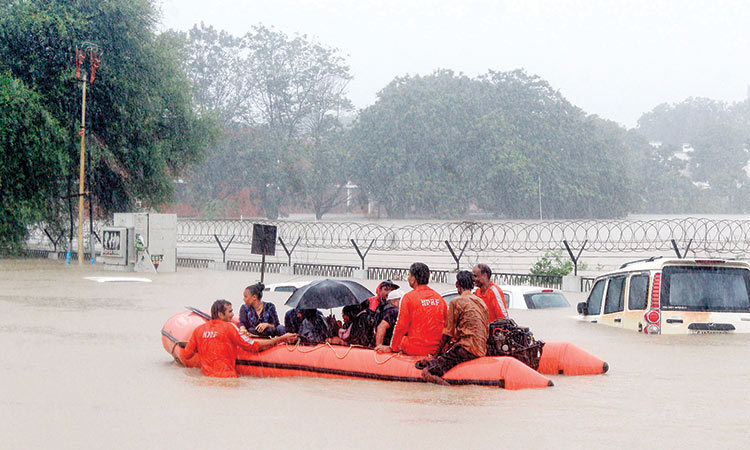
People are being rescued on a boat in Vadodara on Thursday. Agence France-Presse
After drenching Vadodara for more than twelve hours, the rains relented eventually, providing a major relief for the local administration. The torrential downpour, which continued from 6 a.m. on Wednesday till the evening, saw a record breaking 499 millimeters (mm) of rainfall in Vadodara city in just 18 hours.
The scale of the downpour forced a worried Chief Minister Vijay Rupani to hold an emergency meeting at the State Emergency Operations Center (SEOC) late night on Wednesday and instruct the administration regarding rescue and relief operations.
More than 5,000 people were rescued by the police, fire brigade and National Disaster Response Force (NDRF) teams in Vadodara. All schools in the city were closed.
Meanwile, rains continued in other parts of the state with Kutch receiving 35.45 per cent of the average rainfall, Saurashtra 42.14 per cent, central Gujarat 38.43 per cent, north Gujarat 31.11 per cent and south Gujarat 60.58 per cent.
Out of the total blocks in the state, 238 tehsils have been received heavy rain, with 28 tehsils lashed with 4 to 8 inches of rain and 112 tehsils receiving one to four inches.
According to the SEOC data, Mahudha tehsil received 200 mm rain, Halol 189 mm, Dabhoi 187 mm, Khedbrahma 180 mm, Vadali 176 mm, Karjan 165 mm, Sankheda 162 mm, Tilakwada 147 mm, Vanthli 139 mm, Idar 126 mm, Sanand 132 mm, Umarpada 128 mm, Vaghodia 126 mm, Balasinor 122 mm and Himatnagar 118 mm.
Irrigation department official data states that out of the total 204 reservoirs in the state, two are filled hundred per cent, seven filled between 70 to 100 per cent of their capacity, 12 between 50 to 70 per cent and 38 between 25 to 50 per cent. The Sardar Sarovar Dam is filled up to 56.30 per cent of its maxmimum capacity owing to the good downpour in the catcment area in Madhya Pradesh.
The rains have resulted in an inflow of 19,494 cusecs water at the Sardar Sarovar Dam. The Ukai Dam’s inflow is the maximum at 1,09,385 cusecs received daily. The Damanganga Dam has an daily inflow of 50,218 cusecs, Karjan Dam gets 19,690 cusecs and Dharoi Dam receives 11,390 cusecs.
Starting from Thursday, price of 928 items ranging from electronic items to building materials and others which are included in the categories higher than five per cent GST slab will cost one per cent more in Kerala.
This will go towards the flood cess, which will be used for rebuilding Kerala after last year’s flood wreaked havoc in the state. Basic food items are excluded from the list.
The Centre had allowed the state government to levy an extra one per cent flood cess which will now be in place for two years.
State Finance Minister Thomas Issac expects that this one per cent is expected to fetch an additional Rs 2,600 crore and will help in rebuilding Kerala. He said this should be collated on a monthly basis.
However, economist Mary George said one reason why the Centre has allowed the state to collect an additional one per cent cess is because it could not provide the desired funds despite repeated requests to tide over the damages. The Centre had provided Rs 2,904 crore for the state.
“There is nothing wrong with this method but there should be strong checks and balances to ensure that this money solely goes for the purpose it is being collected for. Successive governments in Kerala in the past have seen funds being diverted for other needs and that should not happen,” said George.
The World Bank itself estimated that Kerala suffered a loss of Rs 31,000 crore.
The floods, which began after heavy rains at the end of May last year and continued till mid-August, claimed 483 lives, and at the height of the deluge over 14.50 lakh people were displaced taking shelter in over 3,000 relief camps.
Soon after the floods, the Kerala government gave a call to all to contribute to the Chief Minister’s Distress Relief Fund and through that the state was able to raise about Rs 4,016 crore, of which Rs 1,055 crore still remains unused.
Senior Congress legislator and former State Minister Thiruvanchoor Radhakrishnan however said that the Pinarayi Vijayan government was functioning in a strange way.
Indo-Asian News Service
